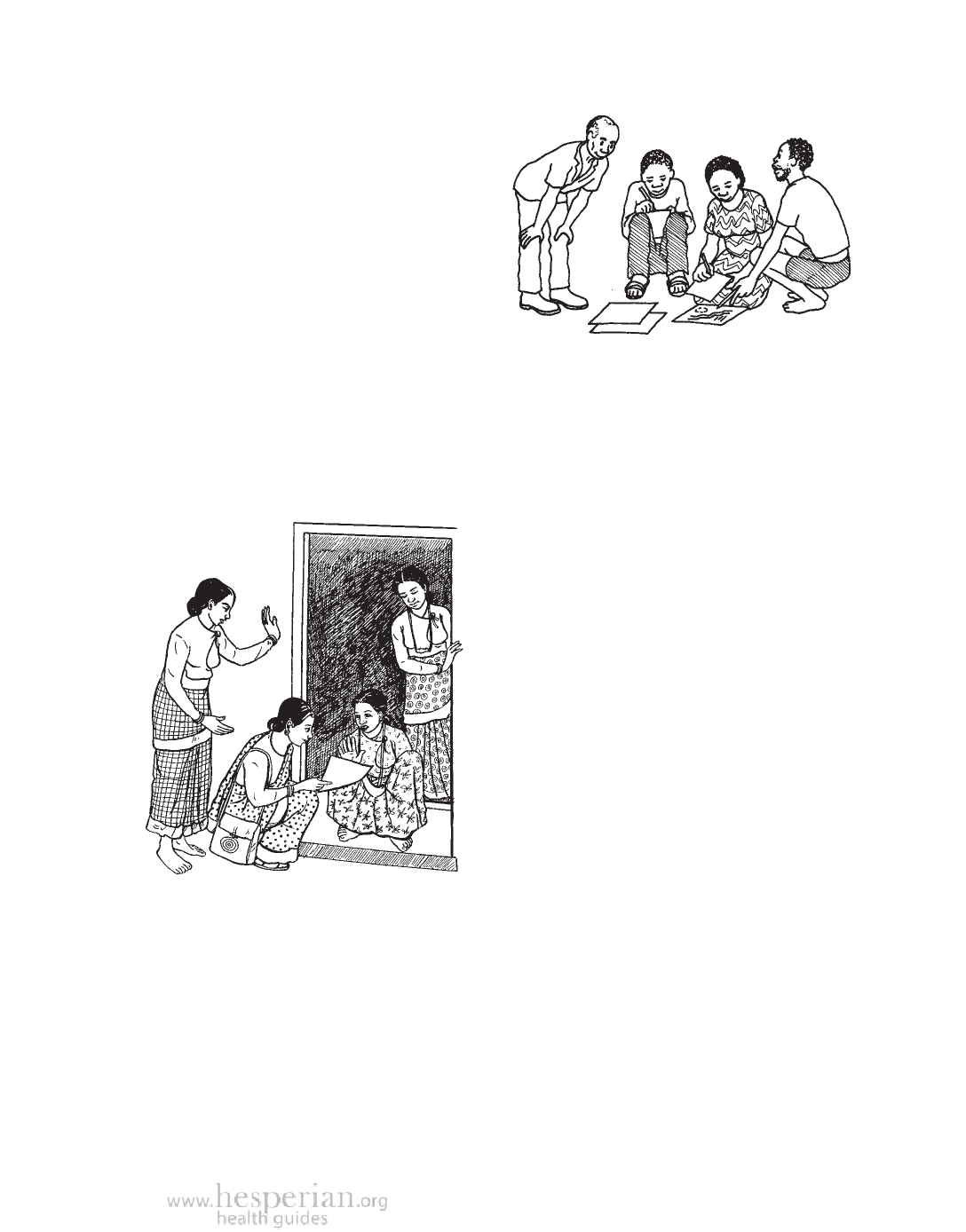
activities for learning and mobilizing
Some communities work together
to paint pictures on the walls of
buildings (murals) that express
their problems and hopes for a
better, healthier future. (For ideas
on making and using drawings
in community education, see
Hesperian’s book, Helping Health
Workers Learn.)
Community surveys
Community surveys are an organized way to gather information. They can
be used to find out what health issues people have, to consider similarities
and differences in what people think or believe, or to measure the support for
different plans or actions in the community.
In a survey, the same questions are
asked in the same way to all of the
people participating. Surveys can be
done in homes, workplaces, schools,
places of worship, other gathering
places, or even over the telephone or
by post.
Surveys allow people to share their
thoughts privately, without having to
come to meetings or other public events.
They can be a way for people who might
be afraid, or who are not allowed to
participate in the community decision
making process, to have their concerns
and ideas considered. Often people
are more willing to talk when women
give the surveys. (For an example of a
community health survey, see pages 500
to 505, “Communities affected by oil
organize a health study.”)
Theater
Theater is a way to explore problems and propose solutions while entertaining
and having fun. People can act out their own experiences and imagine the
experiences of others. Some issues and conflicts may be easier to consider if
they are portrayed in another time and place. (See the next page for ways to
use theater.)
17
A Community Guide to Environmental Health 2012